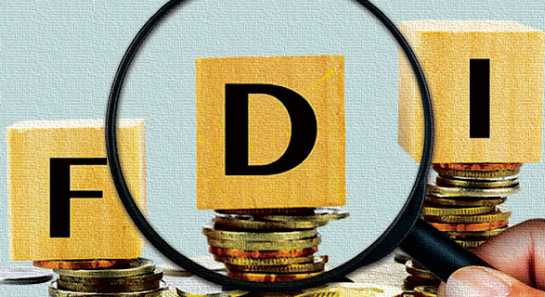Gujarat FDI Jumps 55%, Hits $7.3 Billion in FY 2023-24
Foreign Direct Investment (FDI) has grown a lot in Gujarat during the fiscal year 2023–24, reaching a total of USD 7.3 billion. This is a 55% rise from the previous year, making the state, after Maharashtra, the second-highest receiver of FDI in India. Several effective policies and programs put in place by the state government are to blame for the rise in FDI, which is an extra USD 2.6 billion compared to the fiscal year 2022–2023. Gujarat has gotten more foreign capital than Karnataka and Delhi combined. It is now only behind Maharashtra, which got USD 15.1 billion in the same period.
Strategic Initiatives and Outcomes
Gujarat has seen steady growth in foreign direct investment (FDI), rising from USD 2.7 billion in 2022 to USD 4.7 billion in 2023 and then to USD 7.3 billion in 2024. This is thanks to Prime Minister Narendra Modi’s vision for a “Viksit Bharat” (Developed India) and Chief Minister Bhupendra Patel’s policies that are good for business. Through improving industrial infrastructure and making business-friendly environments, these policies aim to make the country a good place to spend.
Factors Influencing Investment Inflows
GIFT City, Sanand GIDC, Dholer SIR, and Mandal Becharaji SIR are some of the cluster-based industrial areas that have helped bring in a lot of investment. Gujarat has also become more appealing to foreign investors thanks to big projects like microchip factories. FDI has been boosted even more by sector-specific policies in areas like IT, semiconductors, and green energy, as well as financial incentives and faster business processes.
About Foreign Direct Investment (FDI)
- Economic Impact: Foreign Direct Investment, or FDI, is when a company from one country buys a business in another country or grows its operations there. Foreign direct investment (FDI) can have a big effect on the world economy by creating jobs and improving infrastructure. However, it can also cause foreign companies to take over local markets.
- Global Trends and Monitoring: Global FDI numbers are kept an eye on by the United Nations Conference on Trade and Development (UNCTAD). It was China, not the U.S., that received the most FDI in 2020. Technologies, energy, and health care are some of the main areas that draw FDI.
- Regulations and Incentives: FDI flows are affected by bilateral investment deals because they protect investors legally. For developing countries to draw FDI, they often offer incentives. This can help the economy grow but can also make people dependent on the country. For the sake of national security, there are tight rules on sensitive areas like defense and telecommunications.
Month: Current Affairs - July, 2024
Category: Economy & Banking Current Affairs








